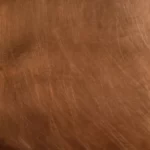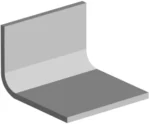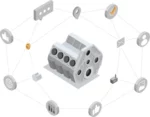Post Processings
- Have you manufactured your product with assemblean? Then we offer you a first-class service for post-processing
- Depending on your needs: Surface treatments, heat treatments and coatings
- All Plastics and Metals
- From small Parts up to Assemblies

Post-Processings with assemblean
To optimally round off the production of your parts or assemblies, we offer you all finishing and post-processing services. We have state-of-the-art machines and techniques at our disposal. This gives us maximum control and guarantees the highest quality standards throughout the entire production process.
Whether products are made of metal or plastic - we offer the right post-processing for every option in order to manufacture the product exactly to your requirements. Below you will find tables from which you can find further information on the various finishing processes and their specifications.
Our ordering process is extremely straightforward. Simply upload your drawings or send them by e-mail. You will usually receive your personalized quote the very next day.
4 simple steps to your product
-
1
Submit product data
Request your quote online or via email. We will review the drawings and technical details of your inquiry.
-
2
DFM-Feedback
If desired, we will get back to you with design-for-manufacturing tips. In collaboration with you, we assist in achieving the best manufacturable solution.
-
3
Get your quote
As soon as the final design has been determined, we will send you a final quote for your order.
-
4
Manufacturing, Quality control & Delivery
assemblean takes care of the entire manufacturing process, conducts quality control, and delivers the parts to the desired destination.
Surface treatments
Burnishing
Chemical burnishing (also known as darkening or browning) describes a finishing process that is mainly used in combination with fats and oils to create protection against corrosion. As with anodizing, the protection is created without the application of a layer, but through transformation. Burnishing typically produces a matt, dark brown to black surface, which is also very homogeneous and resistant to bending and abrasion. In addition to its functional properties, this surface treatment is also often used for decorative purposes, as it can give workpieces a dark matt antique look.
Suitable materials: Steel, Stainless steel
Brushing
Brushing also belongs to the surface treatment group and is used to remove top layers or surface defects and thus deburr, round or polish components. We use various brushes and pastes that are adapted to the respective material and therefore achieve very good results.
Suitable materials: All metals and plastics
Electropolishing
This subtractive manufacturing process is used to reduce roughness and create a gloss. To achieve this, the component is processed using direct current. The advantages of this process include the absence of mechanical or thermal stress. In addition, electropolishing can be used for many sizes and shapes, and material can be removed even in complex areas.
Suitable materials: All metals
Glass bead blasting
This finishing process can strengthen the surfaces of metallic components and meet visual requirements. The glass beads, which usually have a diameter of 0.2 to 2.5 millimetres, are applied to the surface under high pressure. This type of finishing is gentle on the material and produces a matt-glossy surface. However, it is important to seal the components beforehand to prevent rust and blooming.
Suitable materials: Selected metals
Slide grinding
Slide grinding (barrel finishing) is a special grinding process that is particularly suitable for small metal parts. The components are placed in a container together with abrasive media and an additive (compound). The surfaces are processed with high uniformity and reproducibility by rotation, vibration or dragging.
Suitable materials: All metals and plastics
Laser engraving
In laser engraving, an engraving is inserted into the workpiece by melting and vaporizing a laser beam. The depth of the engraving is usually between 10 and 50 μm. In laser engraving, a distinction is made between three types of engraving: deep engraving, black engraving and white engraving. Deep engraving is particularly suitable for tool markings or ID numbers where the focus is on high legibility. White and black engraving is suitable for contrasting workpieces in order to achieve legible results and at the same time keep protective layers intact due to the shallow depth of the engravings. In addition to marking workpieces, laser engraving is also used to create QR codes and produce stamps.
Suitable materials: All metals and plastics
Lapping
Lapping is usually carried out before polishing and after turning and milling as part of the grinding process when finishing surfaces. By using a lapping fluid and a lapping wheel on which the workpiece is moved in a circular motion, a uniform amount of material can be removed. The advantage of this process is very homogeneous machining without grinding marks, and is therefore also used as a cutting process for narrow tolerances.
Suitable materials: Selected metals and plastics
Polishing
Polishing is used for fine surface finishing. A polishing agent containing polishing grains reduces the roughness of surfaces through friction and removes small amounts of material with high precision. This improves the surface structure and creates a shine. This process is suitable for both metal and plastic.
Suitable materials: All metals and plastics
Grinding
Grinding is used for the surface treatment of hard materials. Grinding allows excess material to be removed or surfaces to be smoothed and edges to be defined.
Suitable materials: All metals
Heat treatments
Hardening
Hardening is particularly useful for aluminum alloys if the hardness and strength are to be increased. During hardening, the workpiece is first heated, adjusted and then quenched in the next step. The improved properties are fixed through rapid cooling and finally removed.
Suitable materials: Aluminium
Hot dip galvanizing
Hot-dip galvanizing is one of many methods of applying a layer of zinc to iron or steel workpieces in order to create corrosion protection. The workpiece is completely immersed in molten zinc. As a result, both surfaces and internal surfaces such as drill holes can be reached. This means that a resistant alloy layer can be formed over the entire surface of the workpiece and the zinc layer can be applied on top. Optionally, the duration of the corrosion protection can be improved by an additional coat of paint.
Suitable materials: Steel, Brass, Copper
Galvanizing
Galvanizing is an electrochemical method used to apply metal coatings to workpieces. Before galvanizing, it is important to prepare the workpiece for the process, i.e. to grind, polish and clean the surfaces. In the galvanization process, the workpiece serves as the cathode and the material for the metal coating as the anode. By converting electrolytes into metal ions, an even coating can be achieved on the workpiece by depositing the metal ions on it. Galvanizing can be used for corrosion protection as well as for changing the appearance and technical properties of the workpiece.
Suitable materials: All metals and plastics
Annealing
During annealing, the workpiece is heated to a certain temperature, held there and then slowly cooled. The aim of this heat treatment is to change various properties of the workpiece, such as strength and toughness. In addition, better flexibility and machinability are often achieved.
Suitable materials: Selected metals
Curing
Curing is a manufacturing process in which a component is heated to a high temperature in order to specifically change its structure. After the workpiece has been held in the new shape for a certain period of time, it is quickly cooled down. As a result, the workpiece becomes harder and stronger. The three most important curing processes are transformation curing, precipitation curing and work curing.
Passende Materialien: All metals
Nitriding
Nitriding is one of the surface hardening manufacturing processes that changes the chemical composition of the workpiece. In this thermochemical process, nitrogen is added to the steel of the workpiece either in a salt bath or in a furnace with a gas atmosphere, causing it to form a very hard compound layer on the surface. The underlying diffusion layer, consisting of the embedded nitrogen, has a positive effect on the fatigue and wear resistance of the workpiece. The geometric properties of the component are also retained, but nitriding requires prior cleaning of the workpiece and also reacts relatively unstable to pressure in terms of surface area.
Suitable materials: Steel, Titan
Surface layer hardening
Surface hardening is closely related to the classic hardening process, but only refers to the surface layer or surface. The aim of surface hardening is to significantly increase the hardness of the surface and fatigue strength and thus make it more resistant to wear. A distinction can be made here between processes without changing the chemical composition, e.g. flame hardening, and processes with changes to the chemical composition, e.g. nitriding.
Passende Materialien: Steel
Coatings
Anodizing
Anodizing (electrical oxidation of aluminium) describes the manufacturing process in which an oxidic protective layer is created on an aluminium workpiece. In contrast to other protective layers, e.g. using electroplating technology, anodizing does not apply any additional material to the base aluminium, but instead converts the top layer of the aluminium into an oxide using direct current. This results in a thin layer that protects against corrosion and is highly resistant to weathering. An anodizing process can also be used for colouring, which means that anodizing can also be used for decorative purposes.
Suitable materials: Aluminium
Enameling
Enameling is an additive manufacturing process in which the pre-treated workpiece is coated with one or more layers of a combination of inorganic materials. Workpieces made of metal or glass are particularly suitable for this. The enamel layer usually consists of silicates (inorganic materials) and oxides (oxygen compounds). The base layer is fused to the base metal or glass at a high temperature and the remaining top layers are applied on top. The advantage of this manufacturing process is the decorative embellishment of the workpiece, as well as the electrical insulation and thermal resistance that can be achieved by the protective layer.
Suitable materials: Selected metals, glass
Hard anodizing
Similar to hard chrome plating, hard anodizing is always used when the highest possible wear resistance is required. With hard anodizing, the oxide layer of the aluminium becomes even thicker and more resistant than with normal anodizing, and is similar to comparable but significantly more cost-intensive steel workpieces with equivalent properties. Hard anodizing can therefore compensate for deficits in the material and increase quality in a cost-effective manner.
Suitable materials: Aluminium
Varnishing
Varnishing is one of the most important additive finishing processes for coating workpieces. The varnish can be applied for industrial purposes using different processes. The four most important processes are electrical spraying, mechanical spraying, casting, rolling and dipping. The varnish used consists of different compositions and can be adapted depending on the area of application. Basically, it consists of binders, pigments, solvents and thinners, fillers and additives. The latter in particular are very flexible and can be adapted to the requirements of hardness, color and gloss, for example. Before a workpiece can be coated, a suitable surface must first be created. This is possible in combination with chemical and mechanical cleaning. The possible applications of varnishing are almost unlimited and cover all industries.
Suitable materials: All metals and plastics
Phosphating
Phosphating is a chemical surface treatment in which the cleaned metal workpiece is coated with a phosphate liquid. The chemical reaction between the metal and the phosphate solution creates a highly resistant conversion layer that provides good corrosion protection and also improves the sliding and adhesive properties. Phosphating is often used to prepare a workpiece for further surface treatments such as varnishing, as varnishing achieves significantly better results on phosphated surfaces.
Suitable materials: Selected metals
Powder coating
Powder coating is an electrostatic coating process in which the paint powder is distributed on the workpiece by the conductive materials. Subsequent heat treatment cross-links the paint powder on the surface so that it adheres in the long term. Powder coating, usually using a spray gun, can only begin once the surface has been cleaned of all impurities and prepared for the powder coating. Careful pre-treatment prevents deficits in quality, such as paint peeling, and at the same time improves corrosion protection and protection against scratches and other effects. Powder coating can be carried out automatically and in all color variations, and is suitable for household appliances, for example.
Suitable materials: Electrically conductive materials, e.g. steel
Our materials
We can post-treat numerous metals and plastics with our various finishing processes. Find out more about the details of our materials.
Our blog

9 CNC design tips for ideal CNC parts
The state-of-the-art manufacturing techniques CNC-milling and CNC-turning offer precision, repeatibility and consistency. CNC-milling involves computer-assisted machines to remove material from a workpiece. CNC turning turns a workpiece on a turning […]
WeiterlesenBook personal meeting
Contact Us
* By submitting the form, you agree to the assemblean privacy policy.













